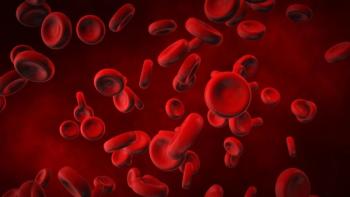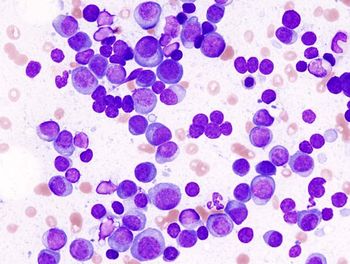
- ONCOLOGY Vol 14 No 2
- Volume 14
- Issue 2
Cancer and Male Sexual Dysfunction
Dr. Costabile presents a thorough review of the biological causes of erectile dysfunction after cancer treatment and of our current range of medical treatments to restore erections. I believe, however, that despite the technical progress made in understanding and remediating erectile dysfunction during the last 20 years, the majority of men who develop such problems following cancer treatment still do not resume a satisfying sex life.
Dr. Costabile presents a thorough review of the biological causes of erectile dysfunction after cancer treatment and of our current range of medical treatments to restore erections. I believe, however, that despite the technical progress made in understanding and remediating erectile dysfunction during the last 20 years, the majority of men who develop such problems following cancer treatment still do not resume a satisfying sex life.
For example, after localized treatment for prostate cancer, whether with radical surgery or definitive radiotherapy, most men have impaired erections.[1-4] Several studies of this group of patients concur that 30% to 50% are distressed about their sexual dysfunction.[5-9] Yet, only a much smaller percentage of men ever seek medical help for their problems, and, of those who do, less than one-third find their treatments beneficial.[10] This quite modest satisfaction rate is very similar to that found in three long-term follow-up studies of diverse groups of men who sought treatment at impotence clinics for erection problems.[11-13]
Although the introduction of sildenafil (Viagra) may increase satisfaction rates somewhat, its strongest effects occur in men whose problems are based on anxiety alone, or those who have very mild organic impairment of the erectile reflex.[14] Erection problems following cancer treatment are typically more severe than those associated with anxiety or mild organic impairments, however.
Importance of Counseling
How can we close the gap between our technical knowledge on how to stiffen the phallus and our rather disappointing success rates in giving couples back a satisfying sex life? The key, I believe, lies in Dr. Costabiles brief paragraph, headed Counseling.
Although urologists have staked their claim to the wonders and mysteries of the penis, mental health practitioners are often left with the considerable territory of the man attached to it and his partner. In fact, the urologic view of sexuality often reminds me of a line Mae West uttered in the movie, Myra Breckenridge (1970). Playing a casting director, she meets a new hopeful who states that he is 6 foot, 6 inches. West suggests that he just tell her about the 6 inches.
Barriers Preventing Men From Seeking Help
Emotional barriers prevent men from seeking help, and despite Bob Doles willingness to serve as the courageous, World War IIera poster boy for impotence, most men still feel stigmatized admitting that they have a sexual problem. And if they do win the struggle to broach the topic with their physician, they may, in many cases, be met with impatient dismissal. To be fair, time constraints play an important role in producing this attitude among physicians. In this era of managed care, the average visit with a family physician lasts only 10 minutes, including both the physical examination and all verbal communication.[15]
Just this week, my lunch companion at a medical conference, a young female family physician, told me that she and her office nurse had laughed when a pharmaceutical company representative had brought them sample questionnaires on erectile dysfunction, suggesting that they administer them to patients to increase the percentage of men who would discuss a sexual problem. Who needs questionnaires? We already hear too much about those problems, she said.
Counseling Must Include Adequate Patient Education
For those men who conquer the hurdles and actually reach the treatment stage, drop-out rates are extremely high. Although it seems simple to try a pill that may improve erections, sildenafil is often prescribed without instructions about its effective use.
I cannot count the number of times that I have heard of a man who took his little blue pill and then sat disconsolately, waiting for the automatic erection so that he could surprise his partner. But the erection never appeared. The need for mental and physical sexual stimulation, in addition to the medication, was never mentioned by his physician.
Following cancer treatment, a man and his wife should undergo joint counseling on how to comfortably resume sexual activity. They should be encouraged to attempt noncoital sex even if erections are insufficient for intercourse.[16]
Information about other aspects of sexuality besides erection should also be provided. For example, the majority of cancer treatments do not diminish a mans capacity to feel sexual desire, enjoy erotic sensations on his genital area, or feel the pleasure of orgasm.[16] Nonetheless, these facts are rarely included in the doctor-patient discussion about erectile function. Having a hard erection is viewed as the sine qua non of sexual normalcy.
Including the Partner in Discussions
Leaving out the partner is another source of treatment failure. A partners acceptance of a mans need to inject his penis with medication or to use a vacuum pump in order to have an erection depends on her understanding of the problem so that she does not misinterpret the absence of tumescence as an absence of attraction or desire. Even the use of sildenafil can be frightening if a woman fears that it will threaten her partners health.
The mental health professional who is best trained to provide this type of patient education and sexual counseling is often the least valued member of the treatment team. Third-party insurers typically exclude the treatment of sexual dysfunction from whatever paltry mental health benefits they still offer. Cancer survivors and their partners are often delighted to try herbal remedies, aromatherapy, acupuncture, or drumming, but are embarrassed and anxious about seeing a sex therapist.
We are a nation that believes in better life through chemistry. I believe, however, that all our talk about phosphodiesterase inhibitors and veno-occlusive dysfunction remains so much sound and fury when we forget that sex is a sharing of pleasure and intimacy between two people.
References:
1. Litwin MS, Hays RD, Fink A, et al: Quality-of-life outcomes in men treated for early prostate cancer. JAMA 273:129-135,1995.
2. Talcott JA, Rieker P, Clark JA, et al: Patient-reported symptoms after primary therapy for early prostate cancer: Results of a prospective cohort study. J Clin Oncol 16:275-283, 1998.
3. Fossa SD, Woehre H, Kurth KH, et al: Influence of urological morbidity on quality of life in patients with prostate cancer. Eur Urol 31(suppl 3):3-8, 1997.
4. Helgason AR, Adolfsson J, Dickman P, et al: Factors associated with waning sexual function among elderly men and prostate cancer patients. J Urol 158:155-159, 1997.
5. Robinson JW, Dufour MS, Fung TS: Erectile functioning of men treated for prostate carcinoma. Cancer 79:538-544, 1997.
6. Karakiewicz PL, Aprikian AG, Bazinet M, et al: Patient attitudes regarding treatment-related erectile dysfunction at the time of early detection of prostate cancer. Urol 50:704-709, 1997.
7. Jonler M, Moon T, Brannan W, et al: The effect of age, ethnicity, and geographical location on impotence and quality of life. Br J Urol 75:651-655, 1995.
8. Fowler FJ Jr, Barry MJ, Lu-Yao G, et al: Outcomes of external-beam radiation therapy for prostate cancer: A study of Medicare beneficiaries in three Surveillance, Epidemiology, and End Result areas. J Clin Oncol 14:2258-2265, 1996.
9. Gaylis FD, Friedel WE, Armas OA: Radical retropubic prostatectomy outcomes at a community hospital. J Urol 159:167-171, 1998.
10. Schrader-Bogen CL, Kjellberg JL, McPherson CP, et al: Quality of life and treatment outcomes: Prostate carcinoma patients perspectives after prostatectomy or radiation therapy. Cancer 79:1977-1986, 1997.
11. Dewire DM, Todd E, Meyers P: Patient satisfaction with current impotence therapy. Wis Med J 94:542-544, 1995.
12. Jarow JP, Nana-Sinkam P, Sabbagh M, et al: Outcome analysis of goal-directed therapy for impotence. J Urol 155:1609-1612, 1996.
13. Hanash KA: Comparative results of goal-oriented therapy for erectile dysfunction. J Urol 157:2135-2138, 1997.
14. Goldstein I, Lue TF, Padma-Nathan H, et al: Oral sildenafil in the treatment of erectile dysfunction: The Sildenafil Study Group. N Engl J Med 338:1397-1404, 1998.
15. Stange KC, Zyzanski SJ, Jaen CF, et al: Illuminating the black box: A description of 4454 patient visits to 138 family physicians. J Fam Pract 46:377-389, 1998.
16. Schover LR: Sexuality and Fertility After Cancer, pp 42-51, 64-69, 106-111. New York, John Wiley & Sons, 1997.
Articles in this issue
almost 26 years ago
Damage Control on Pain Controlalmost 26 years ago
IOM Committee Endorses Medicare Reimbursement for Clinical Trialsalmost 26 years ago
FDA Approves Docetaxel for Advanced NSCLCalmost 26 years ago
C. Everett Koop Initiates Online Clinical Trials Info Center for Patientsalmost 26 years ago
Major Advance in Treating Relapsed Childhood Leukemiaalmost 26 years ago
Licorice Root Extract Shows Antitumor Activityalmost 26 years ago
Immediate Hormonal Therapy vs Observation in Node-Positive Prostate CancerNewsletter
Stay up to date on recent advances in the multidisciplinary approach to cancer.

















































































